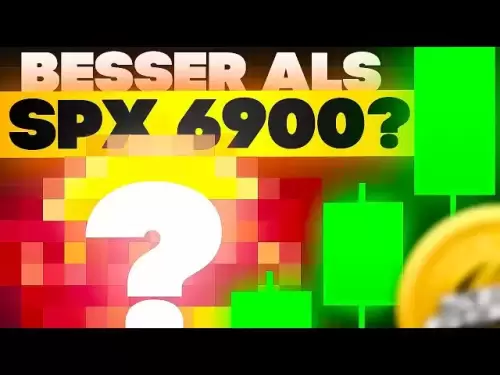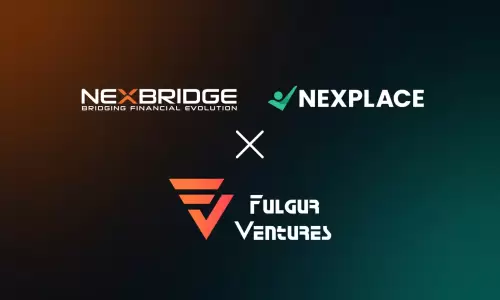 |
|
 |
|
 |
|
 |
|
 |
|
 |
|
 |
|
 |
|
 |
|
 |
|
 |
|
 |
|
 |
|
 |
|
 |
|
Nachrichtenartikel zu Kryptowährungen
L2 rollups have been a great blockchain success story
May 09, 2025 at 01:00 am

Layer 2s have been a great blockchain success story. They’ve reduced congestion on the Ethereum mainnet, driving down gas fees while preserving security.
But maybe they’ve become too successful, drawing chain activity and fee income from the parent that spawned them? At least that’s what some are suggesting lately, most recently at Cornell Tech’s blockchain conference in late April.
Indeed, some think Ethereum should be a little greedier, or at least fight harder for a bigger part of the revenue pie, particularly sequencing fees.
“People in the Ethereum Foundation [the nonprofit that supports the Ethereum ecosystem] will tell you that, ‘Yes, we effed up by being too ivory tower.’ I have heard that multiple times,” said David Hoffman, an owner at Bankless, during a panel discussion at the Cornell Tech event in New York City on April 25.
Elsewhere, Hoffman has urged Ethereum to make a “strategic pivot,” noting that the crypto environment has changed in the last few years. Ethereum no longer has the “luxury of being a peace-time research project…. exploited by its competition.”
L2s are reaping millions of dollars in transaction order fees (sometimes called sequencing fees), but none of these revenues are being passed on to Ethereum, according to James Beck, head of growth at ENS Labs and another speaker at the New York City conference. Beck told Cointelegraph:In short, Ethereum is a neutral verification layer, but the Ethereum mainnet is not being fairly compensated for the work that it is doing. Centralized for-profit L2s like Base, Optimism and Arbitrum are gathering the lucrative sequencing fees while enjoying the security and liveness guarantees of the Ethereum mainnet at relatively little economic cost.
L2s soared after Dencun upgrade
L2 rollups are a recent innovation; they only emerged in 2023. The idea was to reduce chain congestion and gas fees by moving transaction processing from the main blockchain (layer 1) to separate chains that sit atop the mainnet (L2s). But transaction processing is arguably the most profitable part of the revenue game, especially when users opt to pay priority fees to get their orders processed faster.
However, on a relative basis, at least, few people seem to be caring much about the priority fee portion of the revenue mix.
At any rate, it’s no secret that L2s are doing well on the fee front. In fact, they’ve become so successful that they're now largely handling the bulk of the activity on Ethereum.
After March 2024's Dencun upgrade introduced blob transactions to help scale L2s, they were able to move quickly and began generating significant volumes, while layer 1 activity remained relatively low.
As a result, on Monday, April 8, at least one major L2, Coinbase’s Base, appears to have been largely scooping up the priority transaction fees, which are accruing to L2s in a lopsided manner, according to blockchain data and analysis from CoinMetrics.
In total, Base has earned an estimated $98 million in revenues from user-transaction fees (including base and priority fees), while paying about $4.9 million to the Ethereum base layer, leading to a total estimated profit of $94 million since the Dencun upgrade, according to CoinMetrics researcher analyst Tanay Ved.
Of this sum, approximately $90.4 million can be attributed to transaction-order (or sequencing) fees, highlighting the substantial profits being generated by L2s through this revenue stream, while a smaller portion comes from state-transition (or blob) transaction fees, which are also flowing to L2s.
Base’s response
Asked about the lopsided nature of the fee split, a Base spokesperson said: “Today, Base already pays Ethereum fees for every transaction on Base. All transactions are settled on Ethereum, and so far, Base has paid Ethereum more than $20 million in settlement fees since Base’s creation.” One can see these fees on Token Terminal under “cost of revenue,” the spokesperson added.
“Overall, Base is making getting onchain more accessible with fast and cheap transactions and helping grow the Ethereum ecosystem by onboarding more users, builders, apps and assets, all of whom are transacting in ETH and driving demand,” said the spokesperson.
However, in many, if not most months, Base’s overall transaction fees are roughly 10 times the amount paid to Ethereum for settling trades, according to examination of the referenced Base financial statement. In April, for instance, the most recent full month, Base reaped $3.7 million in transaction fees, but only $305,000 was delivered to Ethereum as settlement fees — about 8% of total fees.
Still, maybe things aren't quite so dire. Even if the calculus of the fees is out of kilter now, the imbalance may not last, others caution. Ethereum hard forks
Haftungsausschluss:info@kdj.com
Die bereitgestellten Informationen stellen keine Handelsberatung dar. kdj.com übernimmt keine Verantwortung für Investitionen, die auf der Grundlage der in diesem Artikel bereitgestellten Informationen getätigt werden. Kryptowährungen sind sehr volatil und es wird dringend empfohlen, nach gründlicher Recherche mit Vorsicht zu investieren!
Wenn Sie glauben, dass der auf dieser Website verwendete Inhalt Ihr Urheberrecht verletzt, kontaktieren Sie uns bitte umgehend (info@kdj.com) und wir werden ihn umgehend löschen.
-

- Nexbridge, NexPlace und das Bitcoin -Ökosystem: Aufbau einer neuen Finanzgrenze
- Jul 09, 2025 at 11:10 pm
- Nexbridge und NexPlace sind Pionierarbeit in einem bitcoin-nativen Finanzökosystem, das traditionelle Finanzierung mit der dezentralen Welt überbrückt. Erfahren Sie mehr über ihren innovativen Ansatz.
-

-

-

-

-

- Keine Rs 50 Münze? Delhi HC hört, warum Banknoten überragend sind
- Jul 09, 2025 at 11:50 pm
- Das Oberste Gericht von Delhi ist in einer Sitzung in Bezug auf eine PIL -Übersicht über die Zugänglichkeit von Währungen für sehbehinderte Beeinträchtigungen. Finden Sie heraus, warum eine Rs 50 -Münze nicht in den Karten ist.
-

- Münzsammler -Alarm: Sind Ihre seltenen 50p -Münzen ein Vermögen wert?
- Jul 09, 2025 at 11:55 pm
- Tauchen Sie in die Welt der seltenen 50p -Münzen ein! Erfahren Sie mehr über wertvolle Designs, Fehler und wie Sie einen potenziellen Schatz in Ihrer Ersatzveränderung erkennen. Könnte Ihr 50p 2.000 Pfund wert sein?
-

- Keine Rs 50 Münze? Öffentliche Notizen bevorzugen, sagt Finanzministerium
- Jul 09, 2025 at 11:55 pm
- Das Finanzministerium sagt, dass aufgrund der öffentlichen Präferenz für Notizen keine Rs 50 -Münze geplant sei. In einer Petition werden Barrierefreiheitsprobleme für sehbehinderte Beeinträchtigung hervorgehoben.
-




























































